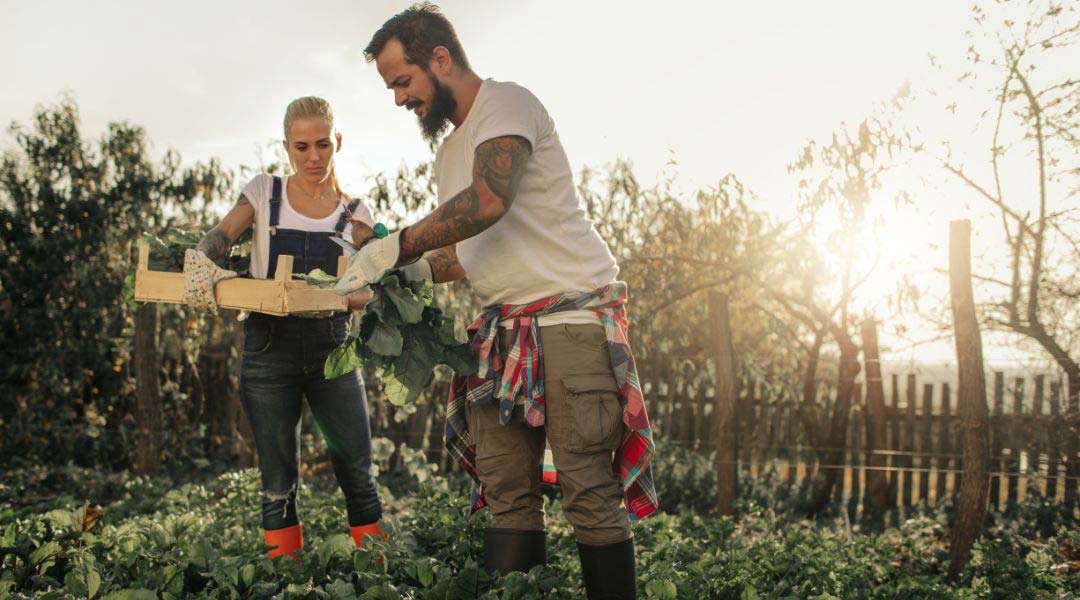The debate about conventional and organic farming has been going on for years. As more people become aware of their food sources, they often ask which type is better. Conventional farming uses synthetic chemicals such as pesticides or herbicides to yield larger crops with fewer inputs. In contrast, organic farming relies on natural methods like crop rotation or mulching to prevent pest infestations.
Although each method offers benefits in different areas, consumers must understand the long-term implications before choosing a side. By comparing information from reliable sources, we gain insight into why one option may be preferable over another when it comes to sustenance production outcomes, environmental impacts, and product quality concerns.
Advantages and Disadvantages of Conventional Farming
This is a form of agriculture designed for production efficiency, which minimizes costs and increases profits for farmers. The use of modern technologies like tractors and combine harvesters can help speed up cultivation processes and reduce labor costs associated with harvesting crops manually.
Additionally, mono-cropping, the practice of planting only one type of crop on a single piece of land, simplifies operations yet reduces diversity in crop production when compared to organic techniques that often rotate between different types during the growing season.
Although these methods may be economically beneficial, they come with serious environmental risks. Overuse of synthetic fertilizers or pesticides could leach into waterways and harm nearby ecosystems. Furthermore, this could significantly increase greenhouse gas emissions, something organic agriculture systems work to prevent by using natural pest control measures instead.
Advantages and Disadvantages of Organic Farming
Organic farming demands higher production costs and lower yields. Farmers involved in organic farming have to put in more labor hours, use natural fertilizers instead of synthetic ones, and take extra steps for pest control, all of which cost them more time and money than what is typically needed for conventional farms. The low yield is a major issue, too, because organic produce can’t compete in quantity when compared to conventionally grown products, leaving fewer resources available at the end of each harvest season.
Bear in mind that although the profit from a single product sale may be less due to customers’ perception of its price point, overall profits will rise. This is because most people prefer organically certified items over commercially produced equivalents and would pay higher prices for them, even if their availability is limited or restricted during particular seasons due to regional sources.
Organic policies require external audits once every three years under Global GAP standards across suppliers supplying chain stores around the world, while they don’t necessarily guarantee food safety. Increased compliance requirements have made it possible to keep pests away and produce healthy crops without the use of chemical treatment. This has provided an opportunity for true, honest value-added sales both locally through farmer markets and through direct contracts with other retail outlets. As a result, this helps to break market shackles and increase profitability.
Sustainable agricultural practices implemented show immense potential to attract a diverse clientele interested in supporting eco-friendly initiatives without compromising quality nourishment, truly creating a ‘win-win’ scenario benefiting everyone involved monetarily, emotionally, and socially.
Loan Policies for Conventional vs. Organic Farmers
Organic farmers often receive subsidies from governments, as policymakers have identified them as an effective way of reducing pollution generated within the food supply chain. A consequence of this preferential treatment is that loan policies also tend to favor organic farmers when it comes to access to finance options. For example, recent research found that although both types of farmers are equally likely to apply for loans at commercial banks, most lenders view organics more positively than traditional farms due primarily to their perceived sustainability benefits.
Furthermore, these studies revealed that while larger-scale operations tended to fare better regardless of whether they were ‘conventional’ or ‘organic,’ smaller-scale operators generally benefited more from being certified in terms of obtaining bank financing.
Environmental Impacts of Each Method
One of the primary causes of erosion is a reduction in soil organic matter levels that leads to a deterioration of soil structure. This increase in conventional farming techniques has had more serious environmental consequences than with organic production, as they’re generally focused on monocultures and mono-cropping. There’s less biodiversity which affects non-agricultural species like birds and insects living nearby. Moreover, synthetic fertilizers used for farmed produce have resulted in air pollution due to ammonia emissions, affecting local wildlife habitats.
Additionally, cutting down vegetation leads to dust storms caused by wind eroding topsoil particles into the atmosphere, posing further risks to animals and human health overall. This contributes towards global warming through carbon dioxide release while also carrying toxins such as cadmium and lead across large distances worldwide, lowering water quality along the way.
On the other hand, organically grown products manage land preservation without the excessive use of chemical pesticides. This reduces the runoff from sites or percolation and thus has fewer impacts on aquatic systems. These efforts keep streams clean and healthy, allowing for the preservation of precious ecosystems which are necessary for maintaining food chains dependent upon these sources over several generations.
Both conventional and organic farming have their advantages and disadvantages. Organic farming is more environmentally friendly but has a higher input cost than conventional systems due to the lack of chemical inputs available. Conventional farming methods can help reduce costs while still producing high-quality food. However, this brings with it greater environmental impacts in terms of chemical runoff, etc.
Farmers need to consider which system might best suit them when deciding how they should grow their crops or raise livestock on their property.
At United Farm Mortgage, we know that each person’s needs are unique. Our loan experts are here to help you make smart decisions based on your situation.

